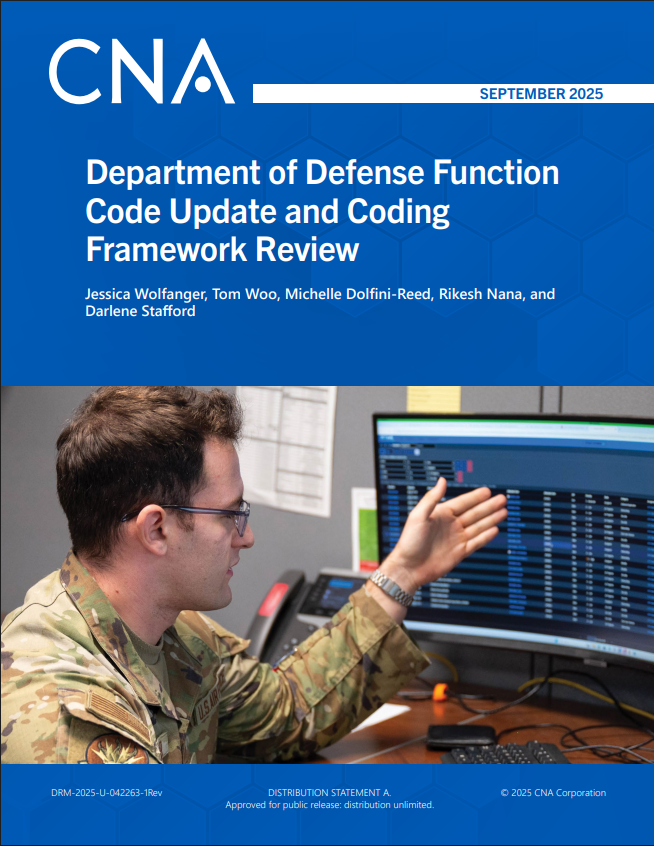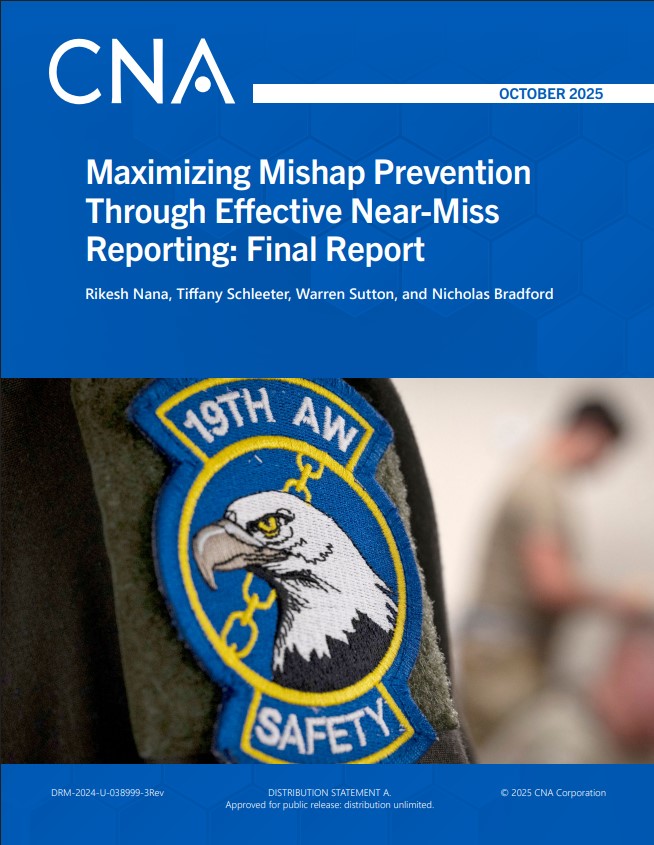Executive Summary
The Total Force Manpower & Resources Directorate (TFM&RS) within the Office of the Under Secretary of Defense for Personnel and Readiness, Manpower and Reserve Affairs maintains a list of Department of Defense (DOD) function codes that identify the type of work performed by all activities in the defense infrastructure and operating forces. Every manpower authorization (or billet)—to include Active, Reserve, and civilian—is assigned a DOD function code to describe the work performed. This coding occurs in authoritative manpower systems and is critical to articulating the size and composition of the department’s workforce from a perspective of requirements and types of work being performed rather than personnel inventory.
Historically, DOD function codes, submitted annually in the Inherently Governmental and Commercial Activities Inventory, have been relied on to identify work that could be considered for competition with the private sector and have been associated with the Office of Management and Budget Circular A-76 processes. Although the A-76 program remains suspended, the pressure to shape the total force effectively and economically—coupled with sustained scrutiny on the size, shape, structure, and workload alignment across the total force—means that these function codes must remain relevant and current. The current set of function codes, however, has not been reviewed since the previous CNA study in 2019,1 and the recommended code revisions from that study were not implemented at the time; the 2010 function codes remain active. Therefore, TFM&RS asked CNA to review the function codes again and to determine additional changes to the codes required by changes in work performed by DOD in the past five years.
In addition, in recent years, DOD has undertaken the development of other billet coding initiatives, such as work role codes, codes that detail the knowledge, skills, and abilities required for functions such as cyber. Other functional communities are in various stages of developing their own work role codes, suggesting the need to review these coding efforts across DOD and determine whether aligning DOD function codes with these frameworks is desirable for standardizing a DOD-wide framework. Therefore, in addition to updating the function codes, this study also assesses the ongoing work role coding efforts to assess their compatibility with DOD function codes.
To ensure that the codes are current and relevant, we recommend that TFM&RS implement the following objectives:
- Add new function codes and revise or relocate existing function codes. Details on theserecommended revisions can be found in Appendices B and C.
- Communicate the strategic value of function codes to the department and distinguishthe different purposes and values of function codes and work role codes.
- Apply more oversight to improve the quality of function code data, for example bydeveloping training for those responsible for applying function codes.
- Continue to independently code function codes and work role codes.
Approved for public release: distribution unlimited.
Details
- Pages: 424
- Document Number: DRM-2025-U-042263-1Rev
- Publication Date: 9/23/2025



